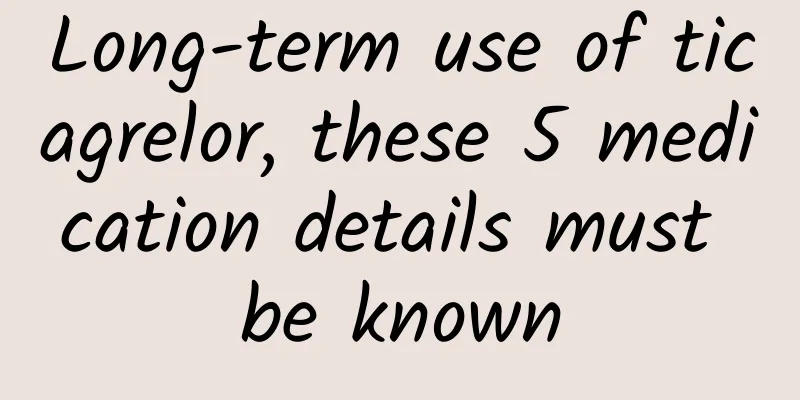What to do if you bleed during non-menstrual period

|
If you find that you have vaginal bleeding during your non-menstrual period, it is caused by pathological factors. If you do not get timely treatment, the problem will become very bad. First of all, the patient should find a way to stop the bleeding. You can take some estrogen drugs. If the bleeding cannot be stopped successfully, you should go to the hospital for treatment as soon as possible. Usually, you need to supplement the body with enough vitamins. 1. Endocrine-related vaginal bleeding 1. Anovulatory uterine bleeding (1) General treatment: Supplementation of iron, vitamin C and protein. Blood transfusion is required for severe anemia. (2) Stop bleeding ① Diagnostic curettage: This method is rapid and effective and can also understand endometrial pathology and exclude malignant conditions. It is routinely used for married patients of childbearing age or perimenopausal period with a long course of disease. ②Progestin: also known as "drug-induced curettage", suitable for patients with a certain level of estrogen. ③Estrogen: Only suitable for unmarried adolescent patients and patients with low hemoglobin. (3) Controlling the menstrual cycle ① Estrogen-progestin sequential therapy: that is, artificial cycle, suitable for adolescent dysfunctional uterine bleeding or women of childbearing age with dysfunctional uterine bleeding (abbreviated as DUB) and low endogenous estrogen levels. ② Combined use of estrogen and progesterone: Suitable for women of childbearing age with functional uterine bleeding and high endogenous estrogen levels. Compound norethindrone tablets (oral contraceptive No. 1) can be used. ③Second half cycle therapy: suitable for functional uterine bleeding during menopausal transition period. (4) Promote ovulation: Suitable for adolescent and reproductive age patients with functional uterine bleeding, especially infertile patients. Clomiphene, urogonadotropin, chorionic gonadotropin, etc. can be used. 2. Ovulatory uterine bleeding (1) Luteal insufficiency: ① Promote follicle development. ② Luteal function stimulation method. ③Functional replacement therapy. (2) Irregular endometrial shedding: Treatment with progesterone, chorionic gonadotropin, etc. 2. Vaginal bleeding due to pregnancy complications 1. Abortion: Threatened abortion should be treated with pregnancy preservation, bed rest, and daily intramuscular injection of progesterone. If the amount of bleeding increases and the paroxysmal lower abdominal pain worsens, it is inevitable abortion. If some tissue is discharged, it is an incomplete abortion and a vacuum extraction should be performed. |
<<: Why don't girls bleed the first time?
>>: Excessive worry about pregnancy and delayed menstruation
Recommend
Why do girls urinate frequently?
Frequent urination and urgency are common to ever...
Early symptoms of irregular menstruation
Experts say that irregular menstruation can cause...
What should you pay attention to in your diet after abortion? I must eat right from now on.
After a woman has undergone an abortion, the scho...
What to do with postpartum urinary incontinence? Physical therapy is good
Many women experience some embarrassing phenomena...
Where do all the farts you hold back go? You will never dare to hold back your farts again after reading this!
When you want to fart, many people try to hold ba...
Can I eat Laba porridge during menstruation?
Menstruation is a normal physiological phenomenon...
What does the small bottle of happiness mean? Where can I play the small bottle of happiness in the circle of friends?
The game of playing with the little bottle of hap...
Are pregnant women's dreams accurate?
Dreaming about pregnancy is not just the exclusiv...
What is the cause of small bumps on the female vaginal opening?
The harm caused by small bumps at the vaginal ope...
Why do chrysanthemums turn green after being soaked in water? Can you drink overnight chrysanthemum tea?
Chrysanthemum (Latin name: Dendranthema morifoliu...
White particles like acne on the vulva
My health is usually pretty good, and I don't...
What is it like to have your period twice in one month?
Women have their periods every month, which usual...
What kind of exercise is good for women to lose weight?
It is normal for women to love beauty. In additio...
Is it true that Chinese medicine conditioning before pregnancy can give birth to a boy?
Although gender equality is advocated now, there ...
Why does your heart skip a beat when you stay up late?
Addendum 1: Thanks to Dr. Liu Qiyun for the revie...









